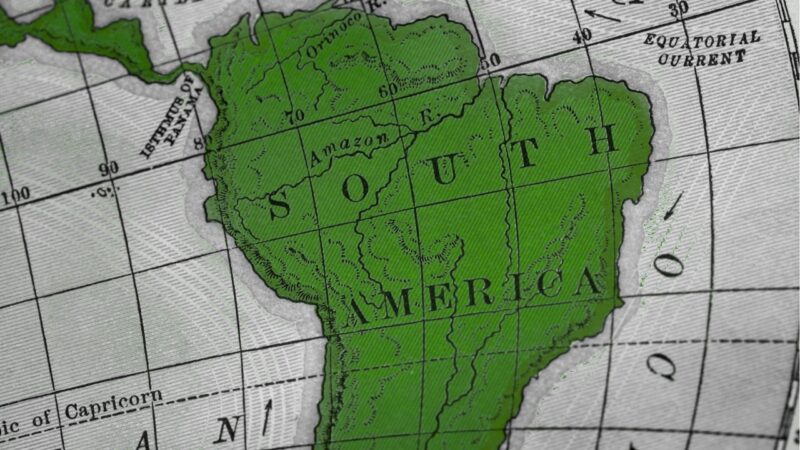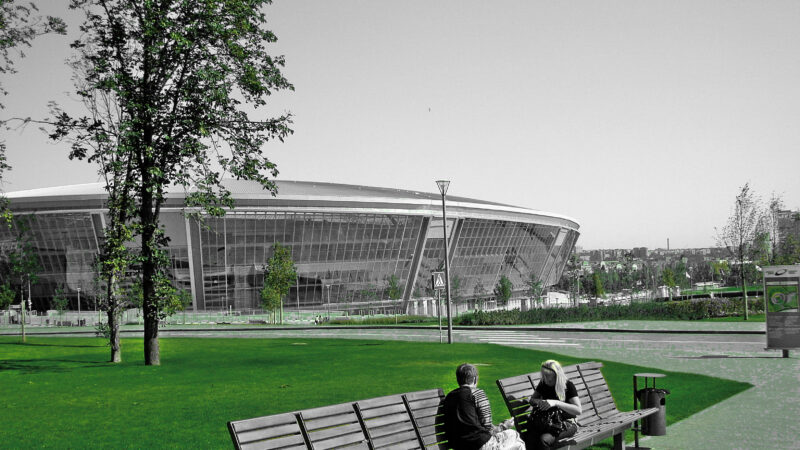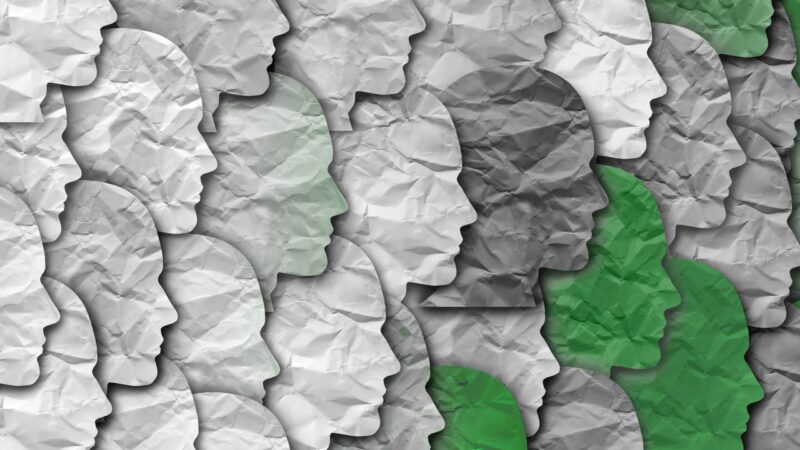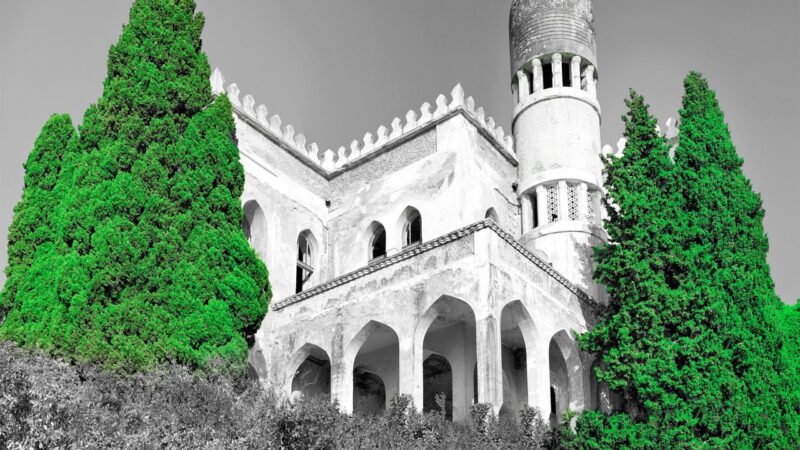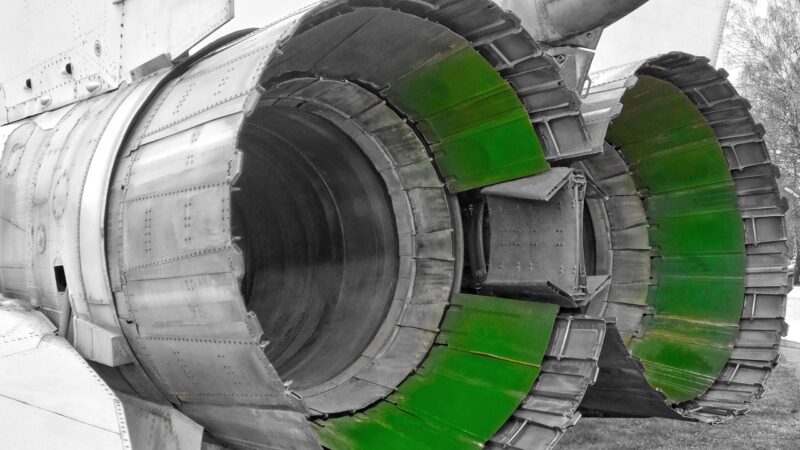Exodus Ukraine
The events we are currently witnessing in Ukraine exactly match the concept of a “Great Civilizational Blow-up” (as defined by Mykola Mykhalchenko) that occurred at the turn of the twenty-first century and is continuing to impact global civilization. Ukraine is finally effecting its exodus from the Russian Empire and constructing an independent state within the boundaries of a variegated Europe, converting itself in the process from a Eurasian to a European civilization.
The war in the Donbas only confirms this process, as a natural manifestation of the civilizational conflict whose basic issue entails freeing oneself from the Russkii Mir and integrating into Europe. The same applies to the recent Ukrainian revolutions, above all the Revolution of Dignіty. Ilya Gerasimov gave it the apt descriptor of Ukraine’s “first post-colonial revolution,” given how the struggle to throw off the empire and create a sovereign European state is connected with fostering a civil society.
Ukraine’s pro-European orientation climbed distinctly after the start of the war with Russia, and the EU continues to be an ally and future goal for the country. Ukrainians’ approval of Euro-integration remains consistently high, with nearly 60% of citizens supporting Ukraine’s joining the European Union. Indeed, it is the defining pillar of Ukraine’s official policy today. In June 2017 support for NATO in Ukraine reached a record high of 47% (five years earlier, sociological surveys assessed that barely one-third of that number considered this option to be the best guarantee of Ukraine’s security, i.e., 13%).
Anti-Russian attitudes increased concomitantly with the pro-European ones. And although it was the main factor, the war was not the only one. Ukraine’s development as a modern nation logically requires not only throwing off the yoke of Communist ideology but also decisively rejecting the dominant role of the Russian language and culture while instead fostering one’s own native Ukrainian language and culture. Regardless of Ukraine’s nominal independence since the USSR collapsed in 1991, it was only after 2014 that such policies began to be considered by the majority of the Ukrainian public as a necessary element of national security, and to be promoted in practice.
This process is difficult and far from painless. The lengthy imperial rule created a series of hybrid identities, many of which have often been confrontational during the post-Soviet period. Even a year after the war started, in most regions of Ukraine there was still a system in place of dual-cultural identification (Ukrainian and Russian), and in some places it was dual-national identification: namely, 57% felt an affinity for the Russian state (23% felt great affinity) and 67% felt an affinity for the Russian language and culture (29% felt great affinity). It is worth noting the numbers feeling “great affinity.” Based on the most recent sociological surveys, about 25–30% of the population are not in favour of such significant markers of Ukrainian statehood as European integration, joining NATO, a single official language, granting state recognition to the WWII nationalist organizations OUN and UPA as warriors for Ukraine’s independence, recognizing the Holodomor as a genocide against the Ukrainian people, creating an autocephalous Orthodox Church of Ukraine (OCU), etc. These are realities that must be taken into consideration. But must they stand in the way of Ukrainians forming their distinct identity? After all, in seeking a compromise with imperial Russian loyalists on issues of culture, language, history, church, etc. there is a risk of losing significant support on one’s own side (and this is based on experience even back in Soviet times). Under conditions of war, when the enemy state is using its language and culture as weapons against Ukraine, can we countenance, for example, efforts to reach agreement with those who support Russian as a second state language or the official recognition of Soviet heroes in selected regions? The most recent research by experts shows that factors such as increasing the status of the Russian language or focusing on the Soviet past are the most likely (by 74% and 67%, respectively) to exacerbate disunity in Ukrainian society. Instead, carrying out a policy of de-Communization—despite its problems and faults—is considered by 69% of the experts to have an overall positive effect on the formation of a common national identity, while 21% believe it has a negative effect.
Like any colonized nation, independent Ukraine must declare its rights to its own history and form its own narrative in order to secure its legitimacy. Іn other words, given that a new future demands a new understanding of the past, strengthening independent Ukraine will require additional (re)creation (or reformatting) of the past. Ukraine, like any country, builds the memory of its past in accordance with its national myths, ideals, and political expediency. The two basic memory models that existed in Ukraine during the twentieth century—the official Imperial/Soviet Russian one and the national independence one (sustained underground and in the diaspora)—were hostile and antagonistic toward each other. After the collapse of the USSR Ukraine rejected its Communist heritage, although it failed to jettison some of its elements. That legacy thus continues to exist in independent Ukraine even to this day, manifesting as various hybrid identities (Soviet, Soviet Russian, Soviet Ukrainian, and others). Independent Ukraine developed a nation-state memory model along Eastern European lines, grounded in cultural nationalism and European values.
Its dominant historical narrative consists of the following:
During the Ukrainian Revolution of 1917–22 (aka Struggle for Independence) there were several attempts to create an independent Ukrainian state, but the overpowering pressure of Red Imperialism from Moscow caused them to fail. The Communist rule was not a free choice of the Ukrainian people, but rather it was imposed primarily as a result of the Bolshevik Russian occupation (Ukrainian-Soviet War, 1917–21).
The Ukrainian Soviet Socialist Republic was in actuality a dependent undemocratic “simulacrum state,” essentially a peripheral colony of Russia. Аpart from ostentatious modernization efforts, its existence was accompanied by massive humanitarian and technogenic disasters—from the Holodomor to Chornobyl—as well as permanent political terror and Russification. All these factors threatened the very existence of the Ukrainian nation.The proclamation of an independent Ukrainian state in 1991 was the logical conclusion to the history of the development and struggle of the Ukrainian nation, which should provide the impetus toward the further self-organization of a multinational Ukrainian political nation. An important goal of today’s Ukraine is to return to the family of European nations from which it was artificially torn away. The European civilizational choice is aligned with the aspirations of the great majority of the Ukrainian people, and it will promote the development of democracy and civil society.
Three basic Ukrainian national symbolic myths nestle comfortably within the framework of this version of historical memory:
- The Holodomor bears witness to the horrific crime against the Ukrainian nation and simultaneously to the resistance to Stalin’s Bolshevik empire, manifested in particular as the preservation of memory concerning the atrocities. The Great Famine is an eternal reminder to Ukrainians that genocide against a nation is only possible in the absence of one’s own democratic country.
- The anti-colonial national liberation struggle of the Organization of Ukrainian Nationalists and the Ukrainian Insurgent Army (OUN and UPA) against Stalin’s empire demonstrated the Ukrainians’ strivings toward independence and creation of their own country; it also аttested to the ongoing imperial genocide against the Ukrainian nation. To a certain extent, the tragedy of the Holodomor and the military operations of the OUN and UPA lay the foundations of the model of historical memory that promoted the establishment of the independent Ukrainian state.
- The newest national symbolic myth—Maidan and the post-colonial Revolution of Dignity—has a clear anti-imperial vector and is directly oriented towards Europe with its cornerstone values of democracy and civil society. At the same time, the Maidan can also be considered as a national liberation campaign that is still struggling to throw off Russian influence and reject Russian expansion.
Consequently, in today’s Ukraine there is no longer any room for the old Imperial/Soviet memory model—just as there was no room for Nazism in democratic Germany after the Second World War, even though a large number of its adherents still remained there. The Communist-Soviet model is incompatible with the Ukrainian nation-state model, as incontrovertibly as freedom and slavery are incompatible, or independence and colonialism. The final attempt to impose a Soviet-Russian memory model in Ukraine ended with the fall of the corrupt Moscow stooge Yanukovych.
Thus, the Ukrainian historical memory should not include any Soviet myths—and that includes above all the myth of the “Great Fatherland War,” which Putin’s Russia uses in its propaganda war against Ukraine as well as an important factor in its programming of Russian national identity. Nevertheless, it is not advisable to exclude the memory of those six million Ukrainians who were variously engaged in opposing Hitler’s Germany during WWII from the Ukrainian historical narrative. They made a worthy contribution toward liberating Europe from the Nazis, and this in itself rightly prevents anyone from tarring Ukrainians as a nation with the label of Nazi collaborators.
Instead, the new Ukrainian identity must unquestionably include memorialization of the Holocaust and targeted Nazi persecution, which victimized millions of our citizens—Ukrainian Jews, the disabled, Roma, and Sinti. In addition we must hallow the memory of the victims of Stalin’s genocide against the Crimean Tatars. Heroic new symbols of Ukraine’s independence and national identity include the Maidan, the fallen of the Blessed Company (“Heavenly Hundred”), and those who lay down their lives to defend Ukraine against the imperial Russian aggression in the Donbas. All these symbols contribute to forming a historical memory that will promote the establishment of a Ukrainian civic nation composed of representatives of all of Ukraine’s nationalities, where public abuse of its symbols or historical memory will be legally prosecuted.
It is time to continue and expand the task of de-Communization and decolonization. In the case of Ukraine, we do not interpret colonialism through the prism of racial superiority or white rule over savages, as it was with the remote colonies of the European empires. Nevertheless, the effect of colonial authoritarian mechanisms—political, economic, and cultural—was to instill a profound feeling of inferiority in the colonized population; this fully applies in the case of Ukraine. Thus, to counteract it is not simply a matter of renaming streets and cities and replacing monuments, although that is important and a matter of principle.
In the broadest sense, decolonization will entail freeing Ukrainians from the image of second-class inferiority and “Little Russianness” that has been imposed since the times of Imperial Russia, cleansing Ukrainian culture, language, and history from foreign ideological and political concepts and trends. Concomitantly, the formation of Ukraine’s new identity is to be grounded upon the culture, language, history, traditions, and related matters of the titular nation—as well as on the European values of democracy and civil society.
Decolonization is not merely a cultural process. It must be carried out also with respect to the economy; after all, according to many indicators Ukraine is still being run as a colonial supplier of raw materials, while the low quality of life of most of the population negates all our cultural achievements. An international conference held at the initiative of HREC in Ukraine titled “Ireland, Ukraine, and Empires: Dependency, Conflict, and Memory” demonstrated the importance of comparative analysis of different countries’ colonial experience. The economist Valentyna Popova, who compared Ukraine’s and Ireland’s development in the last one hundred years, noted that in 1912 the top industry in Ukraine was mining, while the food industry was second and metals processing was third. In 2012 the top three industries were still the same, only with metals processing in first place and mining in third. However, there has been a significant difference between these two post-colonial European countries according to GDP economic growth. From 1990 through 2007 Ireland experienced economic growth, with its GDP quadrupling. Meanwhile, in Ukraine during this time the GDP decreased, by 2007 falling to 61% of its 1990 value. Based on this research, Popova concludes that Ireland’s economy is post-colonial, while Ukraine’s is still colonial. In her opinion, the consequences of colonialism are shown in demographic, economic, and social indicators. “An enslaved country cannot be prosperous. In order to achieve аn economic upswing, it needs to secure political independence for itself.” In the case of Ukraine, it was only starting with the 2013 Revolution of Dignity that the country accelerated its movement toward decolonization and gradually divested itself of institutions that had remained as an imperial legacy, particularly of the oligarchate.
Another conference participant, Ostap Kushnir, also believes that despite some progress Ukraine still retains many characteristics of colonialism. He believes that this can be traced through freedom/unfreedom markers such as institutionalism, identity building through education and culture, and mass media. Dr. Kushnir notes that in Ukraine today the tradition of institutions has continued mostly from the Imperial and Soviet Russian traditions, and even the Constitution was adopted six years after the declaration of independence. He also emphasizes that education in Ukraine is still based on the Soviet legacy, especially in the lists of subjects to be taught. Considering the mass media in Ukraine, on the other hand, most of them belong to oligarchs, and they are almost never used by the government to promote Ukrainian identity. In sum, says Kushnir, “Ireland’s education, mass media, and economics are no longer similar to those offered by Britain. In Ukraine, however, all of them are still very similar to what’s in Russia. The Soviet education system prevails to this day, the mass media are owned by oligarchs, and priorities in the economic sector are the same as in 1912.”
The failure to overcome colonialism enables a series of direct and potential threats for Ukraine. After it declared independence in 1991, at least three lurking imperial threats remained in the country: the dominance of Russian language, the presence of the Black Sea Fleet in Crimea, and the Russian Orthodox Church. The first two succeeded in inflicting upon Ukraine the loss of Crimea and the war in the Donbas, while the third is only gradually being eliminated (according to a survey conducted by the Kyiv International Institute of Sociology, as of 22 May 2019 48.8% of Ukrainians affiliate themselves with the OCU). The struggle to establish Ukraine’s autocephalous Orthodox church has been one of the most important objectives in forming its national identity and statehood. Indeed, “cuius regio, eius religio” goes the saying: the religion of the ruler dictates the religion of those ruled. The granting to Ukraine of a Tomos of autocephaly by the Ecumenical Patriarch of the Orthodox Church was a symbolic milestone in the difficult process of exiting the Russian/Soviet colonial empire and returning to Europe. Although this process is lengthy and difficult, it has already resulted in unmistakable changes in Ukraine’s civilizational paradigms. This proves that we have already crossed the line of no return to the Russian Empire.
Nevertheless, threats do remain. The Russian empire responded to the Revolution of Dignity with direct strikes against Ukraine’s territorial integrity. Аnd today an additional, implicit threat has emerged—namely, the ambiguous policies of the new Ukrainian government. President Zelensky is weak on national state-building issues, and since the start of his term he has not focused on them. Zelensky and his inner circle have a Soviet Russian mentality, are ignorant of Ukrainian history and culture, and have experience of extended business dealings with Russia. Inexplicably, they believe that peace with Putin is possible, the same way they think that Ukrainian society can consolidate around abstract ideals on non-national soil. Ukraine’s sixth president came to power on a wave of criticism of his predecessor, accusing him of corruption and falling standards of living; he also believes that his high approval ratings mean that all the previous government policies were unworthy and need to be changed. But was Zelensky’s victory really the result of Ukrainians’ dissatisfaction with the previous public policy? Аfter all, it was the most effective of all the government policies since independence. Unfortunately, the positives failed to outweigh the above-mentioned negative developments.
In terms of electoral mentality Ukraine is rather specific, with its voters classifiable into three approximately equal groups. One is solidly focused on creating a Ukrainian nation-state, oriented toward Europe (30–35%). The second is mentally still back in the USSR with its Russian-Soviet identity (somewhat over 25%). The third are those who struggle to survive under horrible living conditions, so they don’t think too much about national identity or statebuilding, and mostly they don’t vote in elections, or they do so strategically.
In spite of all the difficulties, it is the first of these groups that is determining the development trends of the Ukrainian state at the moment, and it is constantly growing and strengthening. Meanwhile, the second group is becoming smaller and marginalized. As for the voters who brought in President Zelensky, they include representatives of all three groups. It’s a real mixed bag, and general harmony or a consensus on public policy are hardly possible. For example, the president’s electorate included those who are in favour of NATO and those who support a military union with Russia.
Our Ukrainian identity is without question the first front in our war with Putin. Moreover, without clearly defined public policy there can be no economic development nor European integration for Ukraine. А ragtag mob will never make it to Europe, only a nation consolidated through its “trials in the desert”—that is, its war with Russia. Thus, if Zelensky’s team is incapable of swiftly Ukrainianizing itself and prioritizing national interests, it won’t have a future.
Translation from the original Ukrainian by Ksenia Maryniak, CIUS/ASAUS.

